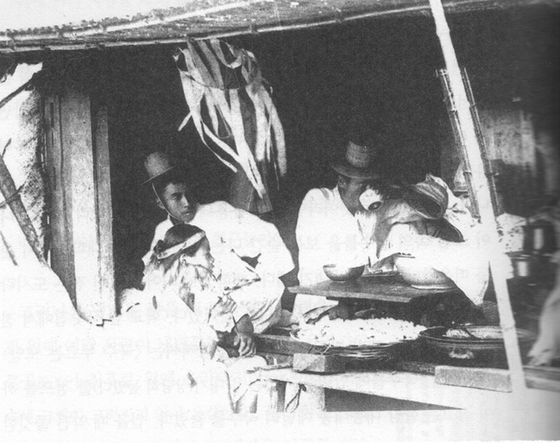The world is now in the era of globalization; products, ideas, and culture are integrated and distributed world-wide. Food is a huge part of this movement. Often original recipes get changed according to the taste of foreigners. However, Korean residents and foreigners drive such changes in different directions.
The foreign residents in Korea appreciate Korean food which is already adjusted to their their taste more if they are served in Korean style at "authentic" Korean restaurants. "The image of Korean culture has significant influence on their satisfaction" [4]. For example, foreigners expected bibimbab which is popular globally to be served with different colored vegetable toppings in a hot bowl made with rock [2]. In other words, many foreigners have defined of traditional, Korean food from media and expect those qualities from modern Korean food. In the beginning of the documentary linked below, chefs from all over the world visited Korea to learn about their image of traditional Korean cuisine and add "Korean taste" to their new recipes [5]. This 40 minute long documentary (unfortunately in Korean without any subtitle) talks about new Korean food culture. It does not only discuss evolving food cuisine in Korea but also difficulties of foreigners and tourists in Korea.
However, the younger Korean generation tend to prefer new, fusion cuisine to traditional, Korean dishes [1]. Popular Korean fusion restaurants have "temporal fusion in spatial and food related elements"[3]. The young generation appreciates restaurants designed in simple, modern style with a hint of traditional elements such as furniture and windows. Their preference to the "fusion of food-related elements" vary from traditional food just served in new style to completely fusion cuisine [3]. Probably foreigners and Korean residents are both seeking for "newer" taste. Foreigners wish to explore traditional Korean flavors and culture that they do not know of while Koreans wish to add changes to traditional Korean food that they are used too. Though two groups of people have very different taste and definition of traditional Korean food, they are the ones changing the food culture in Korea and globalizing Korean food. I wish to see how the two group would converge and create unique Korean food culture in the future.
References:
1. Kang, Hye-Jung. “A Study on Factors for the Preference and Satisfaction of the Korean Fusion Menu.” International Journal of Tourism Sciences. (2013) 37():299-323.
2. Koo, Hee Young. "Study on visual approaches for the globalization of Korean food: Focusing on food coordination and service quality." Sungshin Women's University Graduate School (2012)
2. Koo, Hee Young. "Study on visual approaches for the globalization of Korean food: Focusing on food coordination and service quality." Sungshin Women's University Graduate School (2012)
3. Lee, Jihyun. Oh, Hye Kyeong. "A Study on Expression Characteristics of Indoor Spaces and Food related Elements in Fusion Korean Restaurants." 韓國食生活文化學會誌. (2008) 23(2):204-213
4. Lee, Haeng-soon. Hwang, Jin Sook. Jeon, Hye Mi. and Lee, Soo Bum. "The Effect of the Recognition of Korean Culture in Korean Restaurant on Foreign Residents in Korea" The Korea Academic Association of Culinary (2010) 16(4):64-75
5. SBS Special Documentary. [Strategy to Survive in Ten Million Tourists Era] (Jul, 2012) https://www.youtube.com/watch?v=6bxD0U8cTZk














